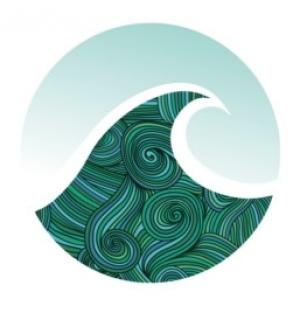-
About Homer
-
- Americans with Disabilities Act Compliance Program City Campgrounds Community Recreation Hickerson Memorial Cemetery
- Library Parks & Trails Public Safety Fire Police Emergency Information
- Events & Activities City Calendar Library Calendar Recreation Calendar Doing Business in Homer Sister City Program Coast Guard City
-
- Departments
- Government
- How Do I?
Three Easy Preparedness Tips for World Tsunami Awareness Day - Nov 5
Homer is an awesome place to live, but it is a little wild. We often experience earthquakes and that puts us at risk for landslides and tsunamis.
Tsunamis are rare events, but they can be extremely deadly. In the past 100 years, 58 of them have claimed more than 260,000 lives, or an average of 4,600 per disaster, surpassing any other natural hazard.
Alaska’s Good Friday Earthquake in 1964, at magnitude 9.2, was the second strongest earthquake ever recorded. Subsequent underwater landslides caused numerous tsunamis, heavily damaging Valdez, Whittier, Seward and Kodiak and causing 139 deaths. The Indian Ocean tsunami of December 2004 caused the highest number of deaths, claiming an estimated 227,000 fatalities in 14 countries, with Indonesia, Sri Lanka, India and Thailand hardest-hit.
World Tsunami Awareness Day, November 5th exists to help reduce the number of affected people when a tsunami strikes.
It is the brainchild of Japan, which due to its repeated, tragic experience has built up expertise in areas such as tsunami early warning, public action and building back better after a disaster to reduce future impacts.
The date for the annual celebration was chosen in honor of the Japanese story of “Inamura-no-hi”, meaning the “burning of the rice sheaves”. During an 1854 earthquake a farmer saw the tide receding, a sign of a looming tsunami. He set fire to his entire harvest to warn villagers, who fled to high ground. Afterwards, he built an embankment and planted trees as a buffer against future waves.
Are you aware of Homer's tsunami zones and evacuation routes? Are you prepared to be safe? In honor of Tsunami Awareness Day take a few minutes to heighten your awareness and get prepared. A few minutes now could save your life later.
TEN MINUTE PREPAREDNESS TIP TO DO TODAY:
-
Know Homer’s tsunami zone, evacuation routes and where you need to go to be safe.
State geologists recently updated Homer’s tsunami map. The new map takes into account information learned after the 2011 tsunami in Japan and shows that a tsunami may be able to reach higher ground than scientists previously thought.
Homer’s tsunami danger zone now includes the Homer Spit, the entire Beluga Lake area and parts of the airport and Kachemak Drive. Currently, any property that is 90 feet or less above sea level is considered in the inundation zone.
To determine if where you live or work is above 90 feet:
♦ Use a cellular phone with GPS capability to determine an accurate elevation.
♦ Call the Homer Police Department (235-3150) to have them come and they will use a GPS to determine your
elevation.
♦ Locate your property on a topographical map.If you live, work or play in the danger zone, especially on the Spit, along Ocean Drive, Old Town Homer and low lying areas of Kachemak Drive, you need to plan your evacuation route to the closest shelter. Response time for a tsunami could range from minutes to three hours.
Homer's tsunami evacuation map is attached below.
TEN MINUTE PREPAREDNESS TIP TO do this week:
-
Sign up for Emergency Alerts at https://alerts.kpb.us/.
-
Designate a local and out-of-area contact person who can be called by everyone in the household to relay information.
-
Make sure your emergency contacts on your phone have “ICE” (In Case of Emergency!) and Emergency next to their last name and/or in the note field.
PREPAREDNESS ACTIVITY TO DO THIS WEEKEND WITH YOUR FAMILY:
-
Create a household plan - after an earthquake and tsunami you might not be able to use your phone, send an email or check Facebook. Plan now for when you can't communicate.
Follow the guidelines for how to make a family communication plan attached below.



